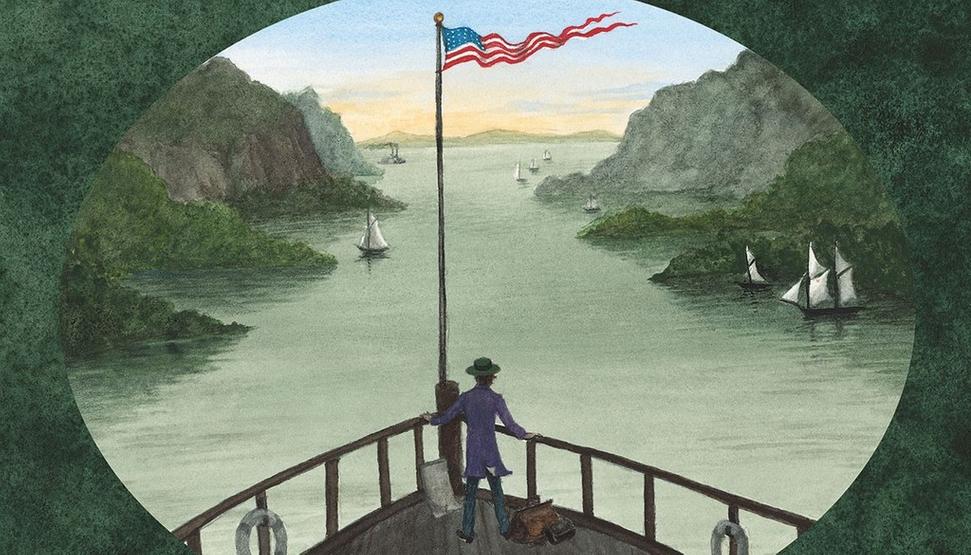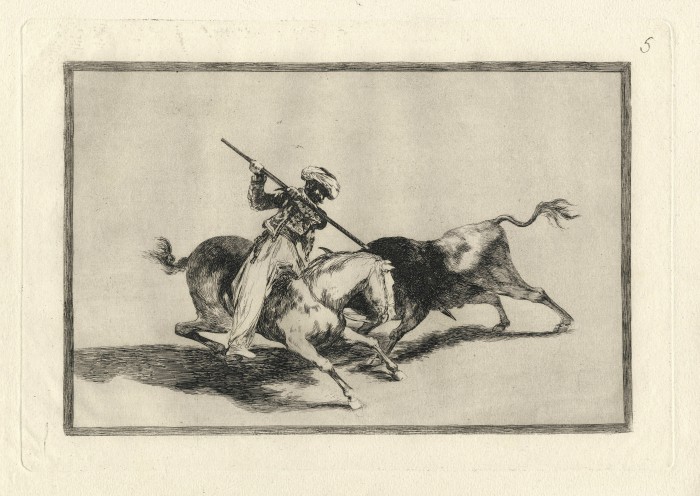ARTISTS
Beckmann, Max
Dix, Otto
Feininger, Lyonel
Gerstl, Richard
Grosz, George
Heckel, Erich
Kandinsky, Wassily
Kirchner, Ernst Ludwig
Klee, Paul
Kokoschka, Oskar
Kubin, Alfred
Macke, August
Marc, Franz
Mueller, Otto
Nolde, Emil
Pechstein, Hermann Max
Schiele, Egon
Schmidt-Rottluff, Karl
Realism and abstraction are frequently cast as
opposing forces in modernism’s developmental narrative. For reasons that
had to do less with art-historical inevitably than with geopolitics,
abstraction was declared victorious in the United States after World War
II. Reflecting wartime alliances, American abstraction traced its
lineage to France, while the Germanic tradition of figural Expressionism
was largely sidelined. To the extent that Germany’s contributions to
modernism were acknowledged, Munich’s
Blaue Reiter group, which
experimented most overtly with abstraction, received greater attention
than the comparatively representational work of artists based elsewhere
in German-speaking Europe. Wassily Kandinsky’s esoteric theories,
endorsed by Galka Scheyer on the West Coast and Hilla Rebay at the
fledgling Guggenheim Museum (originally the Museum of Non-Objective
Painting) in New York, seemed to affirm the formalist dogma that
dominated the American art world in the third quarter of the twentieth
century.
However, neither Kandinsky nor his Expressionist
colleagues in Germany and Austria believed that art should be free of
all extrinsic content, or as the critic Clement Greenberg put it, that
an artist should be concerned solely with the “arrangement of spaces,
surfaces, shapes, colors, etc., to the exclusion of whatever is not
necessarily implicated in these factors.” In the
Blaue Reiter Almanac,
Kandinsky described two fundamental formal approaches, “the great
realism” and “the great abstraction,” both of which, he said, ultimately
serve the same end: to express “the inner resonance of the thing.” The
German critic Paul Fechter, who authored the first book on the subject
in 1914, similarly identified two strands of Expressionism: the
“extensive,” which retains ties to recognizable subject matter, and the
“intensive,” which entirely renounces such imagery. Whether realist or
abstract in their orientation, Expressionists were driven by a need to
re-envision the world.
Germany and Austria industrialized
relatively late and, unlike England and France, had failed to establish
effective democratic institutions to channel the concomitant social
upheaval. Artists coming of age in German-speaking Europe at the dawn of
the twentieth century objected equally to the rigidity of the old
aristocratic order and to the materialism associated with bourgeois
capitalism.
Inspired by the Nietzschean ideal of human perfectibility,
the North-German
Brücke group hoped to build a “bridge” to a
better future by uniting “the entire younger generation” in opposition
to “entrenched and established tendencies.” For the most part,
first-generation Expressionists eschewed political solutions, instead
focusing on spiritual self-improvement. “When religion, science and
morals…are in danger of failing,” Kandinsky observed, “man turns his
eyes away from the exterior world, onto himself.” At the same time, many
Expressionists sought a connection to universal forces beyond the self,
situated in nature, the infinite or the occult.
Although
Germany’s component principalities made remarkable contributions to the
fields of music, literature and philosophy prior to national unification
in 1871, the territory as a whole had historically ceded artistic
leadership to France. The chain of “isms” emanating from the French
capital—Impressionism, Neo-Impressionism, Symbolism, Fauvism, Cubism,
“Primitivism”—continued to inform Germanic modernism, but the German
responses were nonetheless distinct. Whereas French artists tended to
deconstruct their subjects aesthetically, the Expressionists attacked
them metaphysically.
The French (with the notable exception of Paul
Gauguin) responded to “Primitivism” in largely formal terms, while
German artists sought an Edenic ideal in cultures untouched by the
forces of modern civilization. Symbolism—a multinational movement that
attempted to find objective visual correlatives for subjective
states—had a far more profound impact in German-speaking Europe than in
France.
Germans and Austrians proved especially receptive
to fin-de-siècle ideas that revealed, or purported to reveal, the truth
behind surface appearances. Kandinsky equated the discovery of subatomic
particles with the literal dissolution of matter. X-rays, which make it
possible to see through solid objects, came to be associated with
clairvoyance. The physicist Ernst Mach contended that there is no real
difference “between bodies and sensations . . . between what is without
and what is within, between the material world and the spiritual world.”
Enormously popular in German-speaking Europe, Theosophy posited that
the “astral plane” could be accessed through a “subtle invisible essence
or fluid” that radiates from all living beings. Artists were
encouraged, by such contemporary thinkers as Joséphin Péladan, Karl
Wilhelm Diefenbach and Stanislaw Przbyszewski, to consider themselves
“seers,” possessed of a vision that was spiritual as well as artistic.
Accordingly,
the Expressionists transformed color, line and composition into
vehicles for exploring the mystical, emotional or psychological
underpinnings of their subjects.
Urfarben (the “source colors” of
the rainbow), which had been used by the Neo-Impressionists to
replicate optical effects, lost their connection to observable reality.
Not only are these colors purer and brighter than intermediate mixed
hues, but they carry greater emotional weight, especially when clashing
complementaries are juxtaposed.
“Color,” wrote Kandinsky, “is a means to
exercise a direct influence on the soul.” In his 1810 book,
Zur Farbenlehre
(On the Lessons of Color), Johann Wolfgang von Goethe had proposed a
vocabulary of symbolic color equivalencies: red was associated with
beauty, orange with nobility, yellow with goodness, green with utility,
blue with mediocrity and so on. The Theosophists also believed in
mystical color associations, though theirs were somewhat different.
(Blue, for example, connoted purity of thought.) Clairvoyants could
ostensibly see these colors emanating from human bodies as “auras” and
“thought forms”—phenomena painted variously by Kandinsky, Oskar
Kokoschka and Egon Schiele.
Like color, Expressionist line
did not adhere to the strict requirements of realistic verisimilitude.
Japanese woodblock prints and
Jugendstil graphic design, both of
which jettisoned three-dimensional interior modeling in favor of
evocative contours, were decisive influences. The woodcuts of Gauguin
and Edvard Munch, caricatures from the satirical magazine
Simplicissimus,
Medieval religious imagery and tribal carvings added an element of
exaggeration to the mix. German and Austrian artists saw line as an
expressive tool in its own right. Many of them employed jagged, angular
or broken lines and bizarre striations for emotional effect. Some aimed
for concision and economy of means, while others retraced outlines
repeatedly to arrive at a quintessential form.
Drawing the moving figure
was a practice common among the
Brücke artists in Dresden, as
well as Schiele and Kokoschka in Vienna. These men all sought to capture
spontaneous visual responses, what Ernst Ludwig Kirchner called “the
ecstasy of first sight.” Kandinsky, on the other hand, developed a more
cerebral language of symbolic lines.
Whether approached in
aesthetic or metaphysical terms, line constituted a crucial boundary
between figure and ground, subject and surrounding cosmos. From Gothic
woodcuts to
Jugendstil design, many of the sources that
influenced the Expressionists treated positive and negative space
equally. The resultant two-dimensional flattening of the picture plane
was especially well suited to landscapes, whose components (buildings,
sky, trees, mountains, etc.) can readily be reduced to abstract shapes.
By visually uniting these elements, artists conveyed a sense of mystical
harmony with and within the natural or human-built environment. Lyonel
Feininger and Schiele each interpreted (or misinterpreted) Cubism in
this vein. Kandinsky, who between 1910 and 1913 gradually relinquished
representational subject matter altogether, equated the picture plane
with infinity or utopia. Fragmentation of form could be used by artists
with a more figural bent to suggest the immateriality of the soul and
the fusion of the body with the spirit realm.
But there is a limit to
how much the human figure can be abstracted and still remain, well,
human. The contrast between artistic representations of “real” people
and the two-dimensional surfaces upon which they “lived” was more likely
to evoke alienation than harmony. For some Expressionists, the line
dividing figure from ground, physical from spiritual, was an impermeable
barrier that only served to highlight the fragility of the self in the
face of a surrounding existential void.
Despite certain
broad affinities among its artists, Expressionism was not a coherent
style in the manner of Impressionism or Cubism. German-speaking Europe
had multiple cultural centers, essentially revolving around its
different art academies. In the final decade of the nineteenth century, a
number of Secession initiatives arose to counter the dominance of those
academies. The Secessions did not espouse specific stylistic programs,
but rather sought to provide exhibition outlets for the rising
avant-garde and to foster international cultural exchange. Collectively,
their aim might be summed up by the motto of the Vienna Secession: “To
the age its art; to art its freedom.”
As a younger generation came to
the fore in the twentieth century, the Secessions foundered.
Nevertheless, they bequeathed to their Expressionist successors a
mandate to pursue the
Kunstwollen—artistic aims—of the time on
their own individual terms. Artists, dispersed among the preexisting
academic centers in such cities as Dresden, Berlin, Munich and Vienna,
took up the challenge in disparate ways.
Die Brücke,
established in Dresden in 1905, was the first and, initially, the most
cohesive Expressionist group. Its founding members, Kirchner, Erich
Heckel, Karl Schmidt-Rottluff and Fritz Bleyl, were former architecture
students at the Dresden Technical Institute, and though the curriculum
there covered drawing, only Kirchner, who spent one semester at a
progressive studio school in Munich, had any dedicated fine arts
training. Kirchner brought back from Bavaria an appreciation for
Jugendstil
graphics and Gothic woodcuts, as well as an interest in primeval
cultures, which was soon affirmed by the Oceanic and African art in the
Dresden ethnographic museum. This yearning for the “primitive” would
take Emil Nolde and Max Pechstein (both of whom joined
Die Brücke in 1906) to the South Seas in 1913-14, and Otto Mueller (a member from 1910-13) to the Balkans in the 1920s.
At first the
Brücke
artists attempted to create a refuge from modern civilization in their
own backyard. Working communally in a storefront studio, they endeavored
(in Kirchner’s words) “to bring art and life into harmony with one
another.” During the warmer months, they decamped to the countryside,
where they pursued a shared resolve to “study the nude in free
naturalness.”
Printmaking was central to the
Brücke initiative,
both in forging a collective identity and in soliciting financial
support from “passive members,” who were rewarded with an annual print
portfolio. Woodcut, with its melding of Medieval and contemporary
influences, its stark contrasts and exaggerated forms, is the graphic
technique most often associated with
Die Brücke. But the artists
were equally innovative in their etchings and lithographs, transforming
what had been essentially reproductive techniques into original
expressive vehicles.
The group ethos disintegrated after 1911, when
Heckel, Kirchner and Schmidt-Rottluff decided to join Mueller and
Pechstein in Berlin. Leadership conflicts caused
Die Brücke formally to disband in 1913.
While
Germans at the turn of the twentieth century were struggling to cement a
national identity, Austria-Hungary was being torn apart by ethnic,
economic and political tensions across its far-flung empire. There was
little unity among the Austrian Expressionists, little of the utopianism
that marked the Germans’ quest for radical transformation.
Brücke
artists tried to subordinate themselves to a communal ideal; Austrians
were more concerned with redefining the self in the face of intellectual
challenges by such contemporaries as Mach and Sigmund Freud. Kokoschka,
who claimed to have “x-ray vision,” aspired to extract the souls of his
subjects from their external physical shells. Schiele probed his own
persona incessantly, testing the boundary between pretense and essence.
In his oils, Schiele continued a tradition of Symbolist allegory that
owed much to the example of Gustav Klimt. Mortality and human frailty
were recurring themes for both artists.
The
Jugendstil-inflected
work of Klimt and the Wiener Werkstätte strongly influenced Kokoschka
and Schiele during their student years, but by 1910 each had emerged
with a distinctive Expressionistic idiom. Kokoschka’s raw, painterly
style derived from artifacts he had seen in Vienna’s ethnographic
museum. Schiele, on the other hand, retained a propensity for elegant
lines and structured compositions that can be attributed to his more
conventional academic training and to Klimt’s lingering impact. From
1910 on, Kokoschka spent considerable stretches of time in Germany,
where he made contact with members of
Die Brücke and
Der Blaue Reiter.
Appropriating the heavier impastos and bolder colors of those
colleagues, he hereafter was frequently classified as a “German”
Expressionist. Although Schiele also exhibited in Germany, he had
little success there. Both geographically and artistically, he remained
isolated in the Austrian environment. Austria’s third great
Expressionist, Richard Gerstl, who committed suicide in 1908, was
totally unknown until his rediscovery in 1931. Independently working his
way through the formal and tonal lessons of Neo-Impressionism, Gerstl
arrived at the first iteration of what was later called “Abstract
Expressionism.”
Less disjointed than the Austrian Expressionists, but more informal that the
Brücke group,
Der Blaue Reiter
was an alliance of international artists who exhibited together in
Germany between 1911 and 1913. Because this period coincided with the
publication of Kandinsky’s most famous theoretical writings, in the
Blaue Reiter Almanac and
On the Spiritual in Art,
his ideas came to be associated with artists whose styles were actually
quite diverse. Kandinsky had moved to Munich in 1896, along with two
other Russian artists, Alexei Jawlensky and Marianne Werefkin. Soon
Kandinsky assumed a leadership position, founding the Phalanx group and
school in 1901, and in 1909, the
Neue Künstlervereinigung (New
Artists’ Association), an alternative to the increasingly conservative
Munich Secession. In addition to the three Russians and Gabriele Münter
(a former Phalanx student), the
NKV pulled into its orbit Feininger, Alfred Kubin, Paul Klee, August Macke and Franz Marc—all of whom later showed with
Der Blaue Reiter.
During the years of their association, the
Blaue Reiter
artists, each in his or her own way, explored the distinction between
what Kandinsky called the “great realism” and the “great abstraction.”
“Primitivism” (here incorporating not just tribal art, but domestic folk
art, the work of self-taught painters like Henri Rousseau, children’s
art and, for Klee and Kubin, the art of the mentally ill) represented
the “great realism”: art without artifice. By emulating untrained
creators,
Blaue Reiter artists hoped to recapture a primordial
innocence that would enable them to reveal their subjects’ “inner
truths.” Marc’s search for an unspoiled, “natural” state of
consciousness prompted him to identify with nonhuman animals and to try
to depict the world through their eyes.
The path to the
“great abstraction” lay beyond nature, in the realm of pure imagination.
Kandinsky was looking for a visual equivalent to music; an art that
would be free of any representational associations. “In color,” Macke
declared, “there is counterpoint, violin, ground bass, minor, major, as
in music.” Klee and Feininger, both trained as violinists, tried to
imbue their art with the emotional immediacy of music. Nonetheless,
neither they nor Kubin, Münter, Jawlensky or Werefkin ever entirely gave
up recognizable imagery. Even Kandinsky, slow to digest his own
philosophical pronouncements, was still painting landscape forms as late
as 1913. He worried that a completely abstract artwork might too easily
be confused with a “necktie or a carpet” pattern—confounding the
essential link to the spiritual. Macke and Marc were the only other
Blaue Reiter
artists to break through, albeit tentatively, to abstraction. When they
perished in World War I, Kandinsky became the sole surviving
non-objective painter among the first-generation Expressionists.
The
Expressionists’ search for spiritual authenticity was an implicit
protest against capitalistic materialism. Nevertheless, after the
carnage of World War I and the political turmoil that followed, their
approach appeared hopelessly bourgeois. Prewar utopianism was
superseded by the practical necessity of dealing with the socioeconomic
problems of the Weimar era. Denounced as self-indulgent and
incomprehensible, abstraction was deemed incapable of addressing these
new realities. The artists who came of age in Germany after 1918,
however, readily adopted the more realistic innovations of their prewar
predecessors.
There was, in fact, considerable stylistic
continuity between the first- and second-generation Expressionists.
Fragmented images, erratic lines and crazed croppings were ideally
suited to Otto Dix’s on-the-spot renderings of trench warfare. These
same tropes were subsequently used by Max Beckmann to convey the sense
of dislocation and unease endemic to Weimar society. Expressive
exaggeration, verging on caricature in the case of Dix and George Grosz,
was a perfect way to critique contemporary decadence. Often the
compositions of all three artists are packed with detail, compressed
into a claustrophobic, flattened space. At other times, isolated figures
are presented as icons of alienation. By means of these formal devices,
each artist was able to transform his subjective experiences into an
emotionally compelling commentary on the human condition.
Expressionism’s most significant legacy lies in the creation of a
pictorial language that amalgamates abstract elements with references to
the visible world.
All Photos courtesy Galerie St. Etienne, New York:
MAX BECKMANN (German, 1884-1950)

1. Dinner Party
Circa
1919. Woodcut on thin cream laid Japan paper. Signed, lower right, and
inscribed "Probedruck" (trial proof), lower left. 12" x 4" (30.2 x 10
cm). One of six documented trial proofs; probably hand-printed by the
artist. Hofmaier 158/A.

2. The Tall Man
1921.
Etching on cream wove paper, worked over in ink. Signed and dated, lower
right, and inscribed "Luftschaukel (Handprobedruck)" (Air-Swing
[hand-pulled proof]), lower left. 12" x 8 1/8" (30.5 x 20.6 cm). Plate 5
from the cycle
The Annual Fair. Unique proof of the first state,
hand-printed and extensively worked over by the artist in anticipation
of additions and alterations to the plate in the second state. Hofmaier
195/I.

3. Merry-Go-Round
1921. Drypoing on laid
Japan paper. Signed and with Marées Gesellschaft chop, lower right. 20
7/8" x 15" (53 x 38.1 cm). Plate 7 from the cycle
The Annual Fair. From the edition of 75 impressions on this paper. Hofmaier 197/IIBa.
4. Portrait of Irma Simon
1924. Oil on canvas. Signed and dated, upper right. 48" x 23 5/8" (122 x 60 cm). Göpel 235.

5. Reclining Woman
1945.
Pen, ink and pencil on watermarked laid paper. Signed, dated and
inscribed "A," lower right. 13" x 14 1/8" (33 x 35.9 cm). Study for
Afternoon (Göpel 724).
OTTO DIX (German, 1891-1969)
6. Madonna
1914.
Watercolor, gouahce, ink and pencil on thin off-white wove paper.
Signed and dated, lower right; titled and inscribed "Z. 3081," lower
center. 19 5/8" x 16 7/8" (49.8 x 42.9 cm). Pfäffle A/G 1914/2.

7. Trench with House
1915. Pencil on off-white watermarked laid paper. Signed, lower right. 11 3/8" x 8 1/4" (28.9 x 21 cm). Lorenz WK 5.3.19.

8. Grenade Crater in a House
1916. Pencil on heavy tan wove paper. Signed, lower right. 11 1/4" x 11 1/4" (28.6 x 28.6 cm). Lorenz WK 5.3.24.

9. Soldier
Circa 1917. Black chalk on heavy cream wove paper. Signed, upper right. 16" x 5 1/2" (40.6 x 39.4 cm). Lorenz WK 6.4.27.

10. Apotheosis
1919.
Woodcut on off-white wove paper. Signed and titled, lower right;
inscribed "Handdruck" (hand-pulled print), lower left. 11 1/8" x 7 7/8"
(28.3 x 20 cm). One of a few hand-pulled proofs before the edition of 30
impressions published in 1922. Karsch 30/a.

11. Street Noise
1920.
Woodcut on white wove paper. Signed and dated, lower right, and titled,
lower center; numbered 25/30, lower left. 19 7/8" x 9 1/4" (50.5 x 23.5
cm). Plate 4 from the portfolio
Woodcuts II: 9 Woodcuts. From the edition of 30 impressions. Karsch 26/Bb.

12. Reclining Female Semi-Nude
1929. Red crayon on thin cream wove paper. Signed, upper right. 12 1/4" x 17 5/8" (31.1 x 44.8 cm). Lorenz NSk 12.3.3.

13. The Madam
1923.
Color lithograph on beige laid paper. Signed, lower right, and numbered
64/65, lower left. 19" x 14 1/2" (48.3 x 36.8 cm). From the edition of
65 impressions. Karsch 69/II.

14. Mediterranean Sailor
1923.
Lithograph on heavy smooth off-white wove paper. Signed, lower right,
and numbered 4/55, lower left. 18 1/2" x 12 1/2" (47 x 31.8 cm). From a
total edition of 55 impressions. Karsch 59/b.
RICHARD GERSTL (Austrian, 1883-1908)

17. Nude in Garden
1908. Oil on canvas. Estate stamp, verso. 47 5/8" x 39" (121.1 x 99.1 cm). Kallir 48. Private collection.
GEORGE GROSZ (German 1893-1959)
18. Eccentric Dance
1914.
Pencil on thin cream laid Velin paper. Titled, lower center. Estate
stamp, no. 5-183-6, verso. 11 3/8" x 8 7/8" (29 x 22.5 cm).

19. Reclining Female Nude with Upraised Head
1927.
Pencil on heavy tan wove paper. Signed, lower right, and inscribed
"III/27," upper right corner. 12 3/8" x 17 3/8" (31.4 x 44.1 cm).
WASSILY KANDINSKY (French (Born Russian), 1866-1944)

29. Archer
1908-09.
Colored woodcut on cream watermarked laid paper. Signed, lower rgiht. 6
1/2" x 6" (16.5 x 15.2 cm). Roethel 79. Private collection.

30. Small Worlds
1922.
Portfolio of twelve prints (six lithographs, four drypoints, and two
woodcuts). Title page dedicated to Ilse and Walter Gropius, lower left.
Individual prints signed, lower right. 10 1/2" x 11 7/8" (26.7 x 30 cm).
From the edition of 230 portfolios published by Propyläen-Verlag,
Berlin, 1922, and printed by the Staatliches Bauhaus, Weimar. Private
collection.
ERNST LUDWIG KIRCHNER (German, 1880-1938)

32. Archer in Moritzburg (Erich Heckel)
1909.
Pen and ink on brownish paper. Estate stamp and registration numbers, "F
Dre/Bf 6," "C 2110" and "K 4901," verso. 17 1/4" x 13" (43.8 x 33 cm).
Registered with the Ernst Ludwig Kirchner Archive, Wichtrach/Bern,
Switzerland.

33. Dance Group (Three Dancers)
Circa
1910. Pencil on cream wove paper. Numbered 15, verso. 8 1/4" x 6 1/4"
(21 x 15.9 cm). Registered with the Ernst Ludwig Kirchner Archive,
Wichtrach/Bern, Switzerland.

34. Man and Woman Dancing
Circa
1916. Graphite on thin off-white wove paper. 6 3/8" x 7 7/8" (16.2 x 20
cm). Registered with the Ernst Ludwig Kirchner Archive, Wichtrach/Bern,
Switzerland. Formerly collection Robert Lehman.

35. Fanny in Armchair (Fanny Wocke)
1916.
Lithograph on thin yellow wove paper. Signed, lower right, and
inscribed "Handdruck" (hand-print), lower left. Titled "Fanny" and with
estate stamp and registration number, L450, verso. 23 1/4" x 19 3/4" (59
x 50 cm). One of seven known impressions; hand-printed by the artist.
Gercken 813.

36. Making Hay
1924. Drypoint in brown
on heavt white wove paper. Signed and numbered "111," lower right;
titled and dated, lower center. Estate stamp and registration number, R
489 II, verso. 11 3/4" x 9 7/8" (29.8 x 25.1 cm). One of six known
impressions. To be included in Volume VI of Günther Gercken's catalogue
raisonné; 1466/II. Dube R. 510.
OSKAR KOKOSCHKA (Austrian, 1886-1980)
38. Wiener Werkstätte Postcards
1906-08.
Five color lithographs on heavy card stock. Each 4 7/8" x 3 1/8" (12.1 x
7.9 cm). Published by the Wiener Werkstätte. Wingler/Welz, 3, 4, 14, 15
and 17.
39. The Dreaming Youths
1908. Illustrated
book with eight color lithographs and three line engravings. Numbered
XII inside back cover. 9 5/8" x 11 3/4" x 3/8" (24.4 x 29.8 x 0.9 cm).
One of 275 copies (from a total of 500 printed by the Wiener Werkstäyye
in 1908) published in 1917 by Kurt Wolff. Wingler/Welz 22-29.

40. Sleeping Woman in a Deck Shair (Alma Mahler)
1913.
Red crayon on thin tan wove paper. Initialed, lower left. 13 5/8" x 8
7/8" (34.6 x 22.5 cm). From a series of drawings of Alma Mahler on a
balcony in Naples. Weidinger/Strobl 521.

41. The Last Judgement
1913.
Chalk, pen and ink on thin cream tracing paper. Initialed, lower right.
14 3/4" x 11 5/8" (37.5 x 29.5 cm). Study for the lithograph
Columbus in Chains (Wingler/Welz 45). Weidinger/Strobl 531.
ALFRED KUBIN (Austrian, 1877-1959)

42. Saint Christopher
Circa 1912-15. Pen and ink on buff laid paper. Signed, lower right, and titled, lower left. 14 1/8" x 10 3/8" (35.9 x 26.3 cm).

43. Witches' Sabbath
1918.
Pen and ink on heavy cream wove paper. Signed, lower rgiht, and titled
"Walpurgisnacht," lower left. 10 1/4" x 14 1/8" (26 x 35.9 cm).
AUGUST MACKE (German,1887-1914)

44. Greeting
1922.
Linocut on heavy beige wove paper. Bauhaus blindstamp, lower left edge.
Inscribed "August Macke: Begrußung" by Elisabeth Macke, verso. 9 5/8" x
8 7/8" (24.4 x 22.5 cm). Plate 8 from the portfolio
Bauhaus Prints: New European Graphics, publihed by Staatliches Bauhaus, Weimar, 1921.
FRANZ MARC (German, 1880-1916)

45. Fantastic Creature
1912.
Color woodcut on white laid tissue paper. Signed, lower left. 5 3/4" x 8
5/8" (14.6 x 21.9 cm). One of 60 impressions included in the deluxe
edition of
The Blaue Reiter Almanac, published by Reinhard Piper & Co., Munich, 1912. Hoberg/Jansen 24/3. Private collection.

46. The Shepherdess
1912.
Woodcut on cream Japan paper. Stamped "Handdruck vom Originalholzstock
bestätigt" (authorized hand-print from the original wood block) and
signed by Maria Marc, verso. 8 3/4" x 3" (22.2 x 7.6 cm). From the first
edition of 21 known prints. Hoberg/Jansen 29/1.

47. Genesis II
1914.
Woodcut in black, yellow and green on thin off-white laid paper. 9 1/2"
x 7 7/8" (24.1 x 20 cm). Three color print printed from three blocks.
Hoberg/Jansen 42/2.
EMIL NOLDE (German, 1867-1956)

50. Head of an Apostle
1909.
Watercolor and pen and ink on thin watermarked cream wove paper.
Signed, lower right. 10 1/2" x 8 1/4" (26.7 x 21 cm). Authenticated by
Prof. Dr. Manfred Reuther, May 7, 2017.

52. Christ and the Sinner
1911.
Etching on heavy off-white wove paper. Signed, lower right. 11 7/8" x 9
3/4" (30.2 x 24.8 cm). One of 6 impressions in this state.
Schiefler/Mosel R 155/V.

53. Prophet
1912. Woodcut
on heavy cream wove paper. Signed, lower right, and titled, lower left.
Inscribed "Weihnachten 1937" (Christmas 1937), lower right margin. 12
3/4" x 8 7/8" (32.2 x 22.7 cm). From an edition of between 20 and 30
impressions. Schiefler/Mosel H 110.

54. Woman, Man, Servant
1918.
Etching on heavy white wove paper. Signed, lower right, and titled,
lower margin. 10 3/8" x 8 5/8" (26.2 x 21.9 cm). One of 18 impressions
in this state. Schiefler/Mosel 192/I.
EGON SCHIELE (Austrian, 1890-1918)

60. Two Peasant Women
1908.
Colored crayon on heavy brown wove paper. Initialed and dated, lower
left. Inscribed "Hirschbergen 1908," verso. 6 3/4" x 7 7/8" (17.1 x 20
cm). Kallir D. 246a.
61. Baby
1910. Pencil on tan wove paper. Initialed "S" and dated, lower right. 22" x 14 1/2" (55.9 x 36.8 cm). Kallir D. 392.

63. Study for a Never-Executed Painting
1912.
Watercolor, gouache and pencil o heavy cream graph paper. Initialed and
dated, lower left. 8 1/4" x 11 3/4" (20.8 x 29.7 cm). Kallir D. 1193.
Private collection.

65. Poster for the 49th Secession Exhibition
1918.
Lithograph in black, yellow, and reddish brown on thin yellowish poster
paper. 26 3/4" x 21" (67.9 x 53.3 cm). Kallir G. 15/b.
.
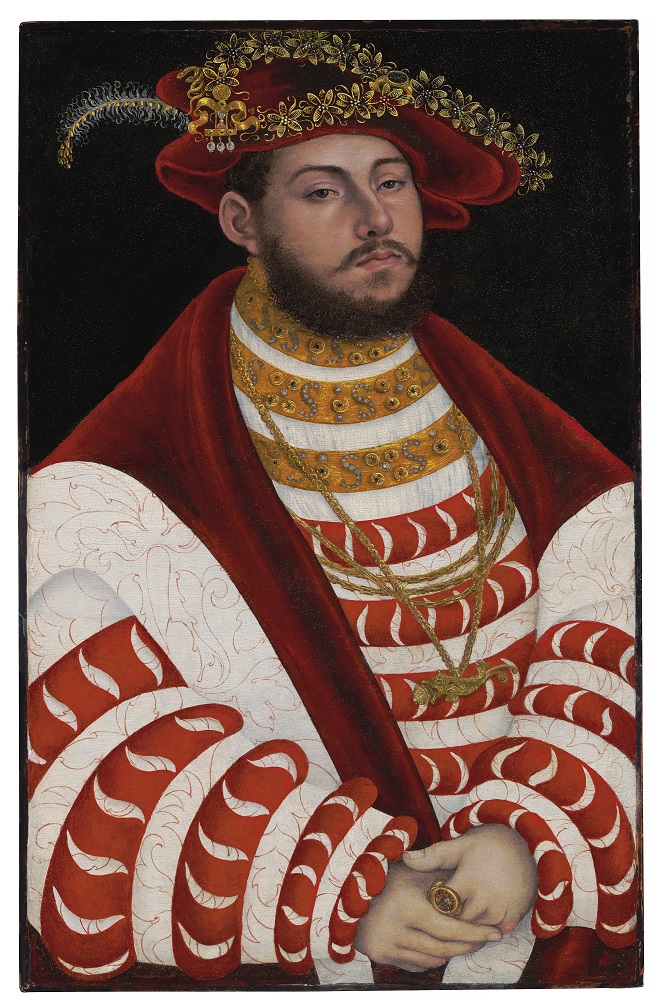
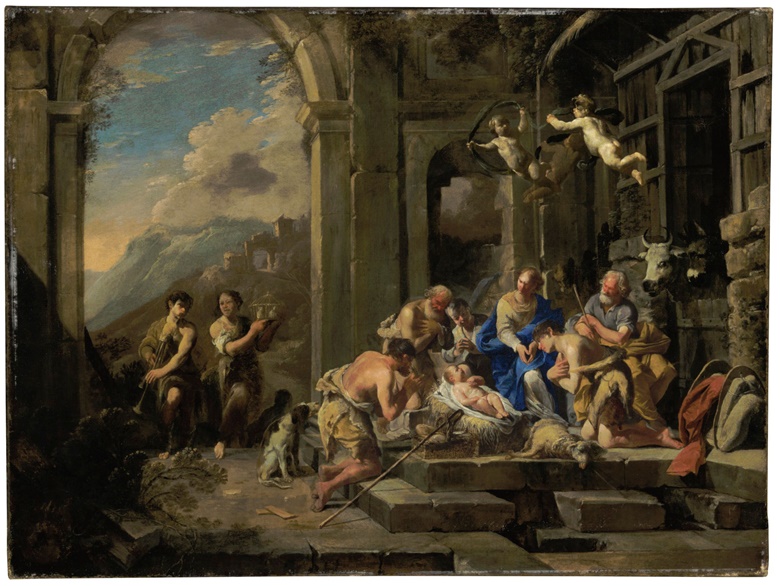




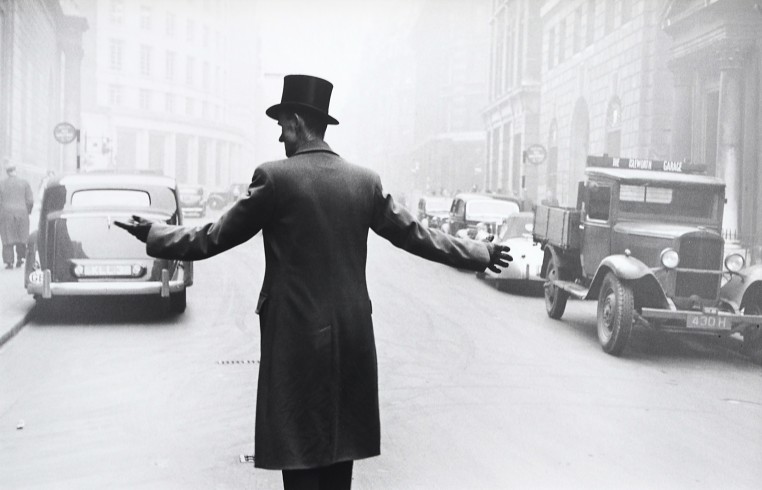



















 32. Archer in Moritzburg (Erich Heckel)
32. Archer in Moritzburg (Erich Heckel)



















